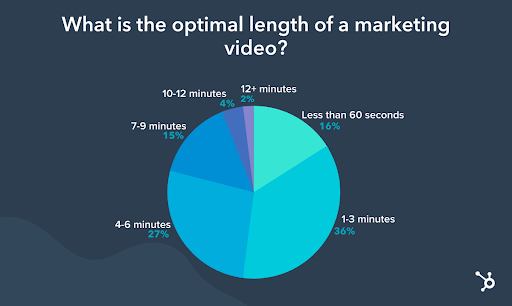Key Takeaways:
- Recruitment videos help attract top talent and create a deeper connection with candidates.
- High production and low production videos are both valuable for recruitment strategies.
- Authenticity is key in recruitment videos, showcasing the company's current culture and employees.
- Utilizing video content in recruitment strategies can help companies stand out, engage candidates, and streamline the hiring process.
In 2023, it’s projected that the number of internet users watching streaming or downloaded video at least once per month will exceed 3.5 billion. Additionally, people dedicate an average of 17 hours per week to consuming online video content.
These statistics demonstrate the strong consumer appetite for video content, with 91% of consumers expressing a desire to see more online videos from brands. Video content has proven to be effective, as 64% of marketers have experienced increased brand awareness through its use.
In the realm of recruiting, leveraging engaging videos allows companies to effectively attract top talent and connect with candidates on a deeper level. Recruitment videos can serve as powerful tools for showcasing a company's human side and making a lasting impression on potential candidates. By providing a visual glimpse into the company's work environment, culture, and team dynamics, videos help candidates envision themselves as part of the organization. Video content also captures top talent’s attention and creates a more immersive, compelling candidate experience.
The Two Kinds of Video Content
There are two kinds of videos that can be created, and both can be valuable to incorporate into recruitment strategies:
High Production: Video content specialists with professional equipment produce the content.
Source: Goldman Sachs
Source: Starbucks Careers
Low Production: Video content shot by employees with non-professional equipment, or user-generated content.
@brynn_buono what it’s like working at Google ATX #google #dayinmylife #austin
♬ Aesthetic - Angium
Source: @brynn_buono
Source: Kaitlin Sondae YouTube
When considering implementing video into recruitment strategies, consider the message or goal of the video. Depending on where the content will live (since video can be used at each point of the recruitment process) or what its purpose is, it will change whether a high or low production video would be best.
For example, day-in-the-life videos are great for low production, since the goal is to hear a first-hand experience from an employee on what it’s like in their role. However, high production can be beneficial if the company is looking for a “who we are” video. In this example, companies can involve teammates from different levels to share how leadership brings their values to life at work.
Having the option to create high production vs. low production video content allows companies to cater video strategies to their needs, ensuring their messaging meets candidates where they are and in the format they’re expecting.
Tips for Recruitment Videos
Recruitment videos offer a unique opportunity for teammates to become company spokespersons and attract like-minded individuals to join the team. Before starting the video production process, companies should consider the following steps:
1. Be Clear and Concise
When it comes to an effective recruiting video, brevity is key. It's important to get straight to the point, introducing the company, culture, values, and employees without being overly verbose or long-winded.
Mastering concise communication is essential for keeping conversations relevant, productive, and memorable. By speaking concisely, hiring professionals increase the likelihood of the audience retaining the information being provided – making a stronger impact with the video content.
Ideally, a recruitment video should not exceed three minutes in length when hosted on platforms like YouTube or the company website. Keep in mind that consumers are increasingly interested in short-form videos, and videos under three minutes are “in the sweet spot,” with 66% of consumers reporting that they pay the most attention to short-form content.
Tip: Practice what to say ahead of time. This can help eliminate filler words from the dialogue and ensure the message resonates with potential candidates.

Source: HubSpot
2. Scripted vs. Unscripted Content In Recruitment Videos
When it comes to video content, authenticity is vital. While it's important for employees to be prepared, overly scripted and heavily produced content can appear inauthentic to the audience and impede the genuine story that employees want to share. Striking a balance between preparation and spontaneity allows the true essence of the message to shine through, creating a more authentic and engaging video experience for viewers.
To maximize the impact of videos, companies should consider the key talking points they want to highlight in the content. By creating prompts and guidelines for content development, companies can spark thoughtful responses while giving employees the opportunity to infuse their own creativity. It is essential to allow room for employees to contribute their ideas during the video creation process, fostering a sense of ownership and authenticity. This collaborative approach ensures that the video reflects the company's messaging objectives and the unique perspectives of its employees.
Tip: Some sample prompts to consider are “What makes the company culture unique?,” “What advice would you give to a candidate to be successful on the job?,” or “How do benefits compare to industry standards?”
3. Clear and Professional Audio
Choosing the right soundtrack for a recruiting video is crucial to showcase the company's personality and reinforce the message. Consider aligning the music with the company's culture and values. For instance, a startup with a dynamic and youthful culture might opt for upbeat and modern music, while an established company might prefer a more neutral and corporate soundtrack.
Tip: Be mindful of music copyright and ensure that the chosen soundtrack is royalty-free, avoiding any legal complications.
To ensure clear audio in the recording:
- Find a quiet setting with minimal distractions.
- Turn off any fans or machines in the room and ensure no objects obstruct the phone or camera’s microphone.
- When recording outdoors, be mindful of windy conditions, which can negatively impact audio quality.
- Bring the recording device closer to the employee’s mouth to capture clean and crisp audio.
By paying attention to these details, hiring professionals can enhance their recruitment video's overall quality and professionalism.

4. Be Accessible
To ensure accessibility for all audiences, companies should add subtitles to their video content. Subtitles enable everyone to engage with the content, and going the extra mile in this aspect can truly set a company apart. It's worth noting that YouTube videos with subtitles experience up to a 40% increase in watch time, highlighting the significant impact of incorporating subtitles. Also, 80% of viewers are more likely to finish a video with subtitles, and 37% said subtitles encourage them to turn the sound on since the captions make the video seem more interesting.
Another way to have videos be accessible to all audiences is with transcripts. Transcripts go beyond captions, providing the full text of video content. They benefit individuals who are deaf, hard of hearing, or unable to listen to audio files due to disabilities or technological limitations. With transcripts, they can search for specific information within a video. Transcripts also enhance accessibility for those with reading disabilities, eliminating the need to keep up with on-screen captions that could disappear too quickly. They enable users to search for specific words and phrases within the video and follow along with the content.
5. Be Authentic
One of the primary reasons why employees leave within the first 30-60 days is due to unmet expectations regarding job characteristics. When crafting recruitment videos, it's crucial to showcase the company's current information and culture rather than an idealized version.
It’s important to give employees at all levels the spotlight and let their voices be heard – including both positive aspects and challenges the company is working through. For example, it’s great to highlight the company’s culture, but it’s also beneficial to share how leadership navigates uncertainty in our current changing landscape. This genuine portrayal builds trust and authenticity, and when presenting a well-rounded view, hiring professionals can establish a stronger connection with potential candidates and foster trust in the organization.
Remember, the heart of the best recruitment videos lies in the people. Seek volunteers within the company who are comfortable speaking on camera and possess a genuine enthusiasm for their work. Their passion and dedication will naturally shine through, capturing the viewers' attention and creating an engaging and authentic video experience.

6. Prep Technology in Advance
With high production video content, it is essential to ensure that all technology is running smoothly before the production begins. Conduct camera tests and sound checks prior to the arrival of employees. This proactive approach allows any issues to be identified and resolved before recording testimonials or shooting videos. It would be disappointing if an employee shared an amazing story, only to discover that technical difficulties prevent its use. Taking the time to prepare the technology ensures a seamless production process and preserves the value of employees' stories.
Tip: Sixteen percent of brands collaborate with production companies to assist them with their video content creation. The Recruitics team has expertise in video production and can help companies easily create polished video content.
When it comes to low production video content, Jamyr is a valuable solution. Jamyr is an all-in-one video platform that empowers employers to source videos directly from their employees. Jamyr provides a convenient way for employees to create and share authentic stories. The platform simplifies the process of scaling video content for recruiting, allowing companies to connect, engage, and hire a greater number of suitable candidates with ease.
—-
In the current recruitment landscape, video is a powerful tool for setting an organization apart from the competition and making a lasting impression on candidates. By utilizing video, recruitment professionals can effectively showcase the company's unique attributes and attract top talent. In a time when standing out is crucial, leveraging video can significantly impact hiring efforts.
Reach out to the team at Recruitics to begin elevating your recruitment video strategy. Our experts can create engaging video content that showcases your employer brand, attracts top talent, and streamlines your onboarding process.



